Valerian

Valerian (Valeriana) belongs to the genus of perennials from the honeysuckle family. The name of the genus is translated from Latin as "to be healthy".

Appearance
The rhizome of the plant has a short length of several centimeters. A lot of thin shoots up to 0.2 m long depart from it. The roots and rhizome have a specific smell. The stalk of valerian is straight, with grooves, in the form of a cylinder. Branches towards the top. Can reach 2 m in height. The leaves are located opposite each other, may have a different shape. At the bottom of the stem, the leaves sit on cuttings. Valerian flowers are small, fragrant, can be white or pinkish in color. They gather in inflorescences.



Kinds
There are more than 200 types of valerian, among them there are those that grow in Russia and neighboring countries. The most common types include:
- medicinal (the most popular species of the genus);
- Amur;
- Volga.

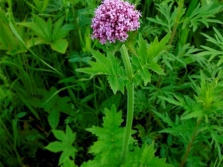
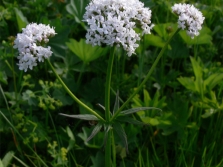
Where does it grow?
Valerian mainly grows in European countries, as well as in the center and north of Asia. It is grown in the countries of North and South America. In Russia, valerian can often be found wild in many regions, except for the northern parts and arid territories. The plant is cultivated in the temperate climate of the middle zone and in the south of the country.Valerian prefers to grow on mountain slopes, as well as near swamps and along river banks. Sometimes found in the undergrowth in the form of extensive thickets.

Peculiarities
Valerian has the following characteristics:
- flowering occurs from late spring to late summer;
- rhizomes have a rather pungent odor specific to medicinal herbs.

Characteristics
Valerian has the following characteristics:
- has a narcotic effect on cats;
- is a good honey plant;
- actively used for medical purposes.
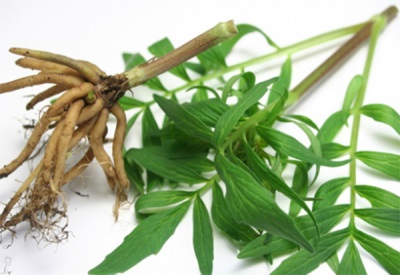
Chemical composition
The roots of the plant contain several percent of essential oils. They also contain valeric acid, organic acids (acetic, formic, malic, palmitic, etc.), tannins and free amines, etc.
Beneficial features
Valerian has the following beneficial properties:
- gives strength to the body;
- is an antidepressant;
- saves from insomnia;
- contains many useful substances for the body.
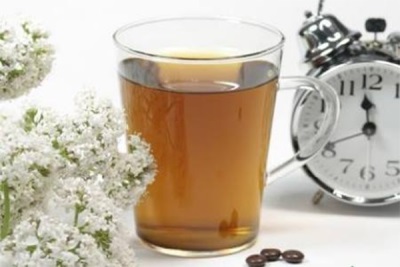
Harm
Overdose of valerian can cause the following negative effects:
- headache;
- loss of orientation in space;
- violation of the digestive tract;
- nausea;
- heart rhythm disturbances;
- sleep disorders;
- lethargy and depression.
Contraindications
You should not use valerian in the following cases:
- in the first trimester of pregnancy;
- with liver diseases;
- with excessive drowsiness;
- when feeding;
- with chronic intolerance;
- with enterocolitis.

Oil
Valerian oil is extracted by steam distillation from the roots. It is painted in a bright color with tints of brown and olive tones. The consistency is viscous, but light. The longer it is stored, the darker it becomes.The aroma of the oil is specific, pronounced. Gives notes of wood and musk.
It is valerian oil that is the main component of relaxation in aromatherapy. It gives calmness and confidence, and also eliminates stress and insomnia. Also, the oil helps to fight headaches, tingling in the heart area. It has a mild analgesic effect, and also normalizes the work of the heart. The oil is also used to relieve muscle spasms. Often it serves as a flavoring and additive in tea collections.
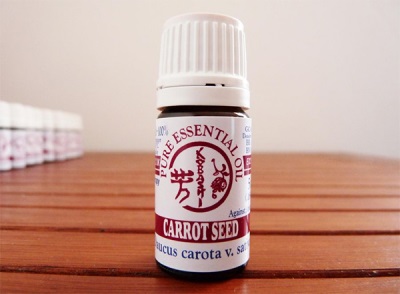
Juice
If the juice of valerian is squeezed from the roots, then it will cope with headaches and spasms of the gastrointestinal tract. You can also use the juice of the aerial parts of the plant, but in this case a weaker effect will be observed.

Application
In cooking
The culinary use of valerian is extremely limited. However, the plant is sometimes used for the following purposes:
- in the production of alcoholic products;
- the English cut valerian leaves into salad greens;
- leaves sometimes serve as a side dish for fish dishes;
- the rhizome is crushed and added to soups and marinades.
But from valerian you can make a very tasty and healthy tea according to the following recipe:
- first, a small bunch of mint leaves is washed and dried;
- wash the lemon and cut it;
- take in equal proportions a handful of raspberry and lingonberry leaves;
- brew everything together with a bag of herbal tea or green tea for 10 minutes;
- after this time, add a few drops of valerian tincture and a spoonful of honey;
- after a couple of minutes the tea is ready.

In medicine
Valerian is actively used in medicine in various dosage forms (tablets, tinctures, powders, etc.). It is applied in the following cases:
- to calm the nervous system;
- to normalize the work of the heart and blood vessels;
- to improve the functioning of the digestive tract;
- to relieve overexcitation;
- to relieve muscle spasms;
- to reduce seizures;
- to reduce pain in the heart and normalize the heart rhythm;
- to relieve spasms of blood vessels and their expansion;
- to reduce pressure;
- with lung diseases and asthma;
- as a sleeping pill;
- in case of malfunction of the thyroid gland;
- with epileptic seizures.

Instructions for use
- With neurosis, sleep disorders and heart palpitations take a soothing decoction of valerian root. To do this, several teaspoons of dried and crushed roots are poured into 200 ml of boiling water, heated over low heat for several minutes, then insisted for half an hour. Before use, the broth is filtered. Dosage - a tablespoon several times a day after meals.
- An infusion is also prepared as a sedative.. To do this, mix valerian roots, hop cones, peppermint and watch in proportions 1:1:2:2. A tablespoon of these herbs is poured into 500 ml of boiling water and insisted for half an hour. Drink an infusion of 100 ml twice a day.
- To prepare alcohol tincture valerian root is insisted on 70% alcohol (one part of the root accounts for 5 parts of alcohol) for a week. 25 drops (maybe a little more or less) are slightly diluted with water and drunk three times a day before meals.
- To prepare a therapeutic soothing bath a few tablespoons of finely chopped roots are poured into two liters of water and boiled for a minute. Then insist about an hour. The decoction is poured into a bath of warm water.


With hawthorn
Valerian combined with hawthorn produces a calming effect.Since hawthorn is a universal remedy against heart diseases, this combination of plants strengthens the heart muscle and normalizes blood pressure, acting gently and safely for health.

With motherwort
The combination of valerian and motherwort has a sedative effect on the nervous system, helps with asthma and insomnia. At the same time, herbs help to calm the heart palpitations. This combination also helps with high blood pressure and hypertension. Valerian and motherwort are similar in their action, but together they make sleep better and stronger, and also help with overexcitation.

With peony
The combination of valerian and peony is a very well-known sedative that relieves tension and stress. At the same time, herbs strengthen blood vessels and help to relax the body, providing better sleep. Peony also contributes to the normalization of the menstrual cycle in women.

In cosmetology
In cosmetology, valerian juice is actively used, and in frozen form it is more effective than fresh. It helps relieve irritation and redness on the skin, especially with sunburn or frostbite. Also, an infusion of valerian can cleanse the skin and tone it, in some cases even whiten it.
Valerian is also good for hair. Its extract is added to shampoos or masks that help relieve itching and irritation of the scalp.

When losing weight
For weight loss, you can prepare an infusion of valerian, which reduces appetite. It should be taken several times a day before meals. To do this, pour a couple of tablespoons of crushed valerian roots into 250 ml of boiling water and keep the broth in a water bath for 15-20 minutes. Infuse the drink for several hours and strain. Dosage - a tablespoon at a time.

During pregnancy
During pregnancy, valerian helps relieve stress and reduce anxiety. It can also be used for insomnia in a future mother. It is contraindicated to take valerian in the first trimester.
It is recommended to use valerian in the form of tablets, since alcohol tinctures are undesirable for pregnant women. The plant has a particularly effective effect in the last months before childbirth, removing excitement and fear. However, you should take the medicine as prescribed by the doctor, since if the dosage is exceeded, you can achieve the exact opposite effect and increase the pressure.

At home
The household uses of valerian are as follows:
- part of herbal preparations and soothing teas;
- aromatization of drinks;
- aromatization of tobacco.
cultivation
Different subspecies of valerian adapt very well to different environmental conditions, so different temperature conditions and any soil are suitable for growing.
Sowing valerian is best in early spring or mid-summer. Seeds may not be covered. After sowing, they must be sprinkled with a centimeter layer of humus. When sowing, the conditions for sufficient soil moisture must also be observed. The first shoots will appear after 14 days. Immediately after this, the soil is loosened and weeds are pulled out of it.
When the fourth leaf appears on the plant, it needs to be transplanted. There should be at least 0.2 m between sprouts, and at least 0.1 m between rows. Weeds must be constantly pulled out and the soil moistened.
Valerian flowering occurs in a year. After that, the flower stalks are carefully cut off so that the yield is higher.

Interesting Facts
- For the first time, it was the ancient Greek doctors who discovered that valerian has a calming effect on the nervous system.
- For the first time in Russia, they began to cultivate valerian in the 18th century. The foundations were laid by Peter I.
- Valerian is also called "cat grass" because of the narcotic effect it has on cats.
- In ancient times, valerian was used as a perfume.


















I often use valerian as a sedative. It helps me.